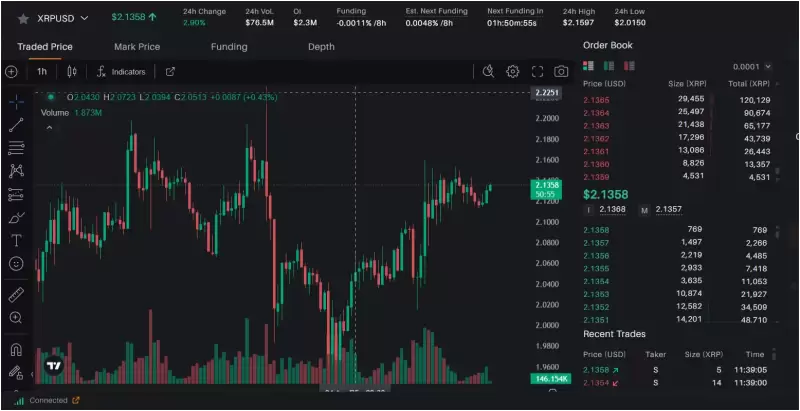 |
|
 |
|
 |
|
 |
|
 |
|
 |
|
 |
|
 |
|
 |
|
 |
|
 |
|
 |
|
 |
|
 |
|
 |
|
Cryptocurrency News Articles
A Treasure Trove of 17th-Century Coins Unearthed in Poland
Nov 10, 2024 at 03:42 am
In a remarkable find near the town of Pomiechówek, Poland, a father and son from the Triglav Historical and Research Association, Sławomir and Szymon Milewscy, have unearthed a hoard of rare 16th and 17th-century coins valued at approximately half a million zlotys.

A father-son duo from the Triglav Historical and Research Association have made a remarkable discovery near the town of Pomiechówek, Poland. Sławomir and Szymon Milewscy, collaborating with the Polish Association of Mint Seekers "Husaria," were initially engaged in an exploration project to find traces of a Roman-era trade route when they stumbled upon a hoard of rare 16th and 17th-century coins, reports Nauka w Polsce (PAP).
The treasure trove, containing 17 coins in remarkably preserved condition, includes silver thalers and patagons from regions such as Saxony, Brandenburg, Tyrol, and the Spanish Netherlands. The collection spans from 1604 to 1641, representing a blend of European mints from the Thirty Years' War era.
Among the coins are:
The historical significance of the find is immense, adds Piotr Duda, an archaeologist with the Triglav Association:
“This is probably one of the largest treasures of this type discovered in Poland, especially in the Mazovia region. The rarity and condition of the coins add indescribable historical value beyond their estimated half-million-zloty material worth."
The finders at the find site near Pomiechówek, Poland. (Polskie Stowarzyszenie Poszukiwaczy "Husaria")
The hoard might be linked to events surrounding the Thirty Years' War (1618–1648) and the subsequent conflicts in the Polish-Lithuanian Commonwealth, such as the Swedish invasion known as the Deluge (1655–1660), researchers speculate.
In 1655, Swedish and Polish Crown forces clashed in nearby Nowy Dwór Mazowiecki, explains the PAP report, a battle that could have prompted a mercenary or wealthy merchant to bury their assets for safekeeping. Given that soldiers and tradespeople alike frequented the area, the coins may have been hidden by someone with substantial wealth or by a foreign soldier employed as a mercenary during the regional conflicts.
Another theory, put forth by Duda, suggests that the treasure may have belonged to a merchant seeking to protect his fortune at a local inn, only to be prevented by circumstances from retrieving it. These historical insights add a fascinating layer to the discovery, connecting it to broader narratives of survival and risk amid the upheavals of 17th-century Europe.
A Treasure That Defies Numismatic Catalogs
The coins' rarity goes beyond value; some are scarcely documented in numismatic catalogs, emphasizing their uniqueness. For example, the Patagon of Albert and Elizabeth from the Spanish Netherlands, which appeared twice in the collection, showcases variations not commonly found, with no precise date available in catalog entries.
The thalers of Johann Georg I, minted in Saxony in 1612 and 1624, are also examples of coins from a period when European economies and currencies were highly decentralized, resulting in an abundance of unique and localized mint issues.
The thalers and patagons demonstrate a unique cross-section of Europe's economic and political landscape, each coin representing the influence and reach of various regional powers. The variety of symbols and inscriptions on the coins reflect the intricate interplay of allegiances, trade, and conflicts that defined the era.
Two coins from the collection that span 1604 to 164. (Polskie Stowarzyszenie Poszukiwaczy "Husaria")
Future of the Find: Preservation and Public Display
The treasure will soon be transferred to the Mazovian Voivodeship Conservator of Monuments, where preservation efforts will begin. The Triglav Association has expressed a desire to see the coins displayed locally, ideally within the September Campaign Museum or the Modlin Fortress Museum, to ensure that the cultural heritage remains accessible to the public. This plan aligns with the increasing interest in regional museums to display historical treasures that illustrate the rich and complex history of the Mazovia region.
The Polish Association of Mint Seekers "Husaria" shared their excitement on social media, noting the discovery's numismatic value and historical significance. They reported that some of the coins, especially the Sigismund III Vasa thaler, are exceptionally rare varieties, made even more valuable by their pristine condition compared to previously auctioned examples.
Top image: Left, finders with the coins, right, the coins by a tree. Source: Polskie Stowarzyszenie Poszukiwaczy "Husaria"
Disclaimer:info@kdj.com
The information provided is not trading advice. kdj.com does not assume any responsibility for any investments made based on the information provided in this article. Cryptocurrencies are highly volatile and it is highly recommended that you invest with caution after thorough research!
If you believe that the content used on this website infringes your copyright, please contact us immediately (info@kdj.com) and we will delete it promptly.
-

-

-

-

-

-

-

- The cryptocurrency market is buzzing, and Ethereum, long seen as the underestimated alternative to Bitcoin, is now in the spotlight.
- Apr 11, 2025 at 05:10 pm
- After the activation of Bitcoin ETFs in January, Ethereum ETFs are now at the center of discussions. However, a burning question on the lips of investors and analysts is: will Ethereum staking within ETFs become a reality in 2025?
-

- Ethereum (ETH) Price Performance Mirrors the Downfall of Nokia: Will Solana (SOL) Be the Next Apple?
- Apr 11, 2025 at 05:10 pm
- Ethereum price performance is mirroring the downfall of Nokia according to a top market analyst. The largest altcoin struggles against its top rivals like Ripple (XRP) and Solana (SOL), which are gradually eating into its market share.
-



























































